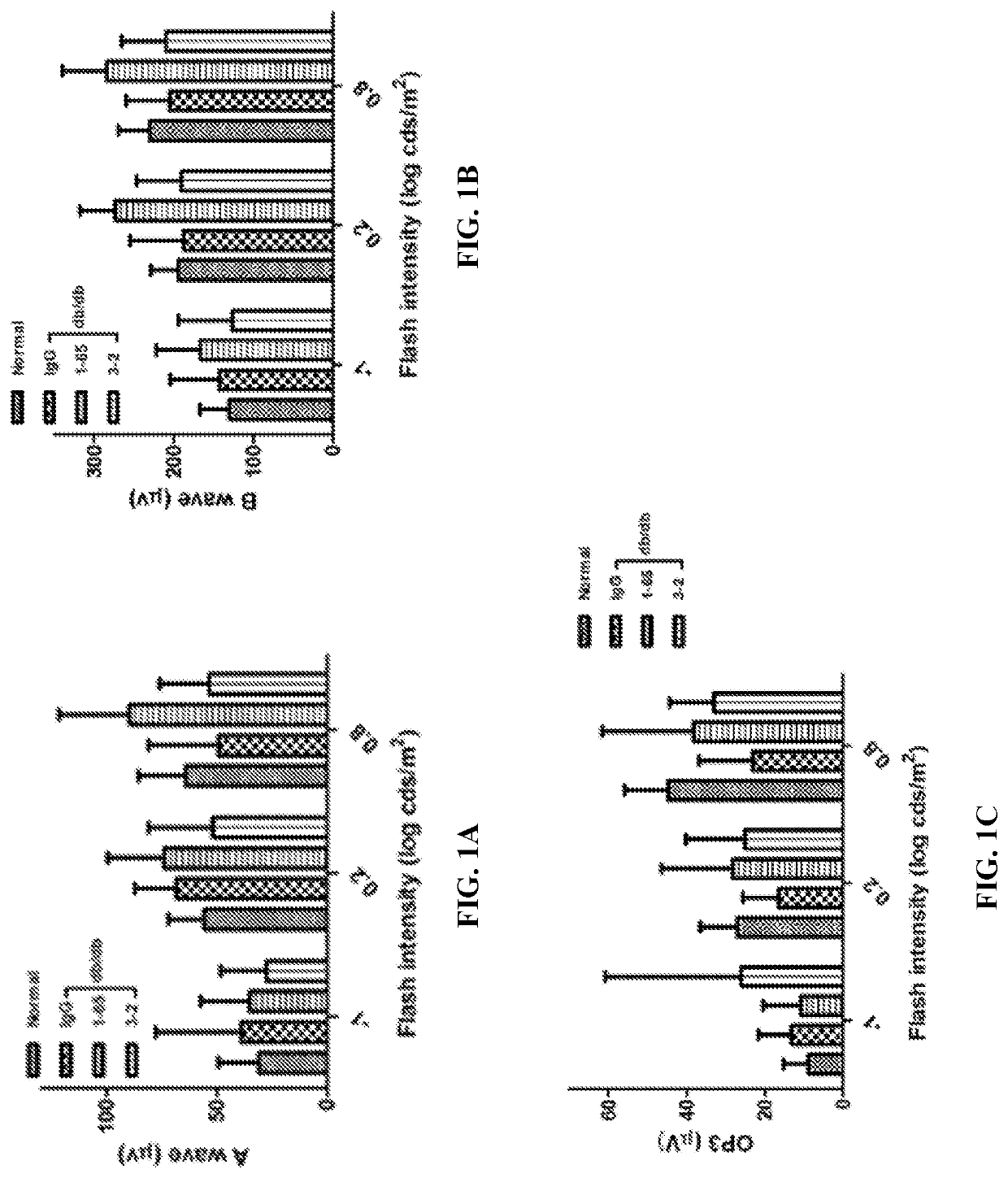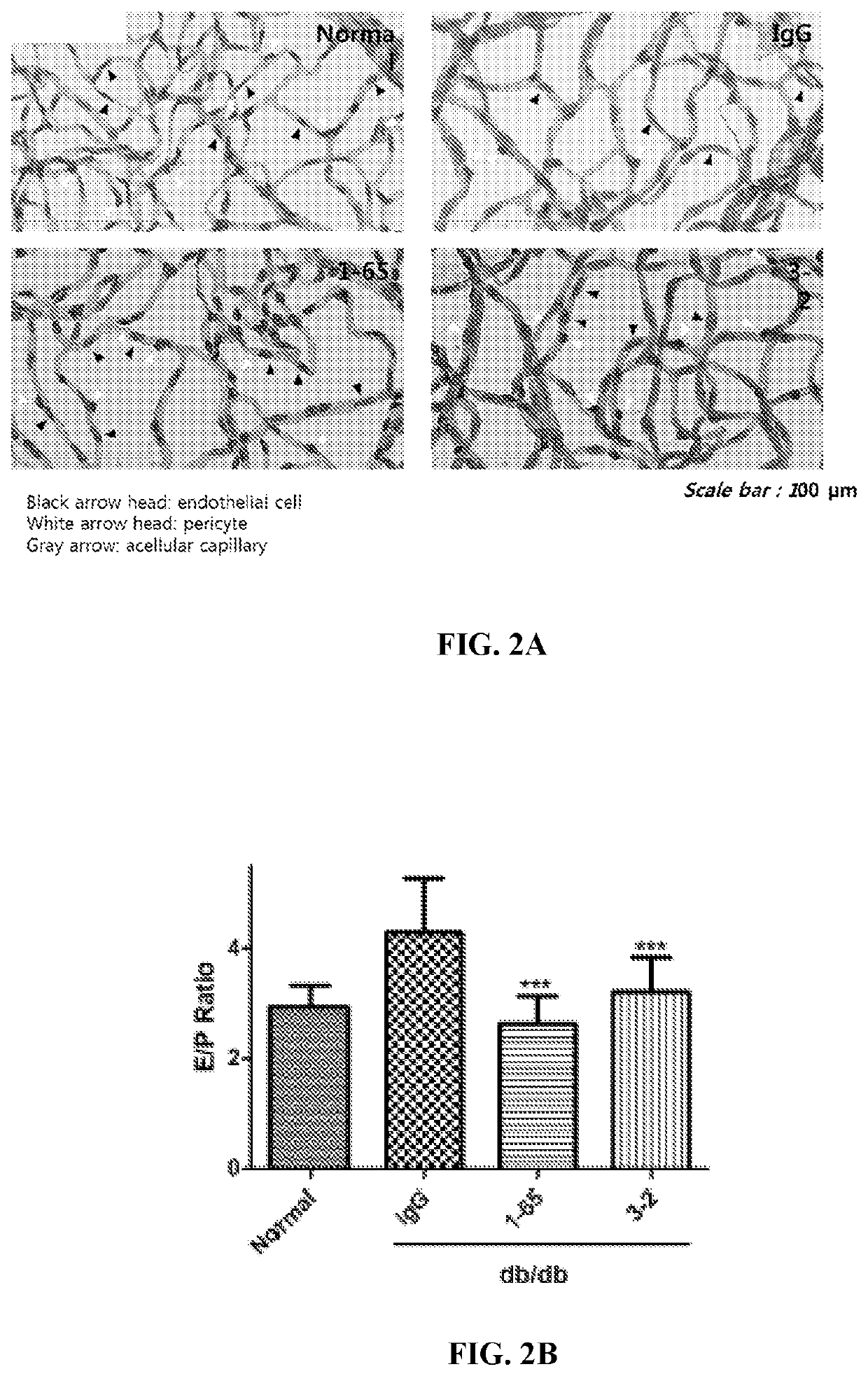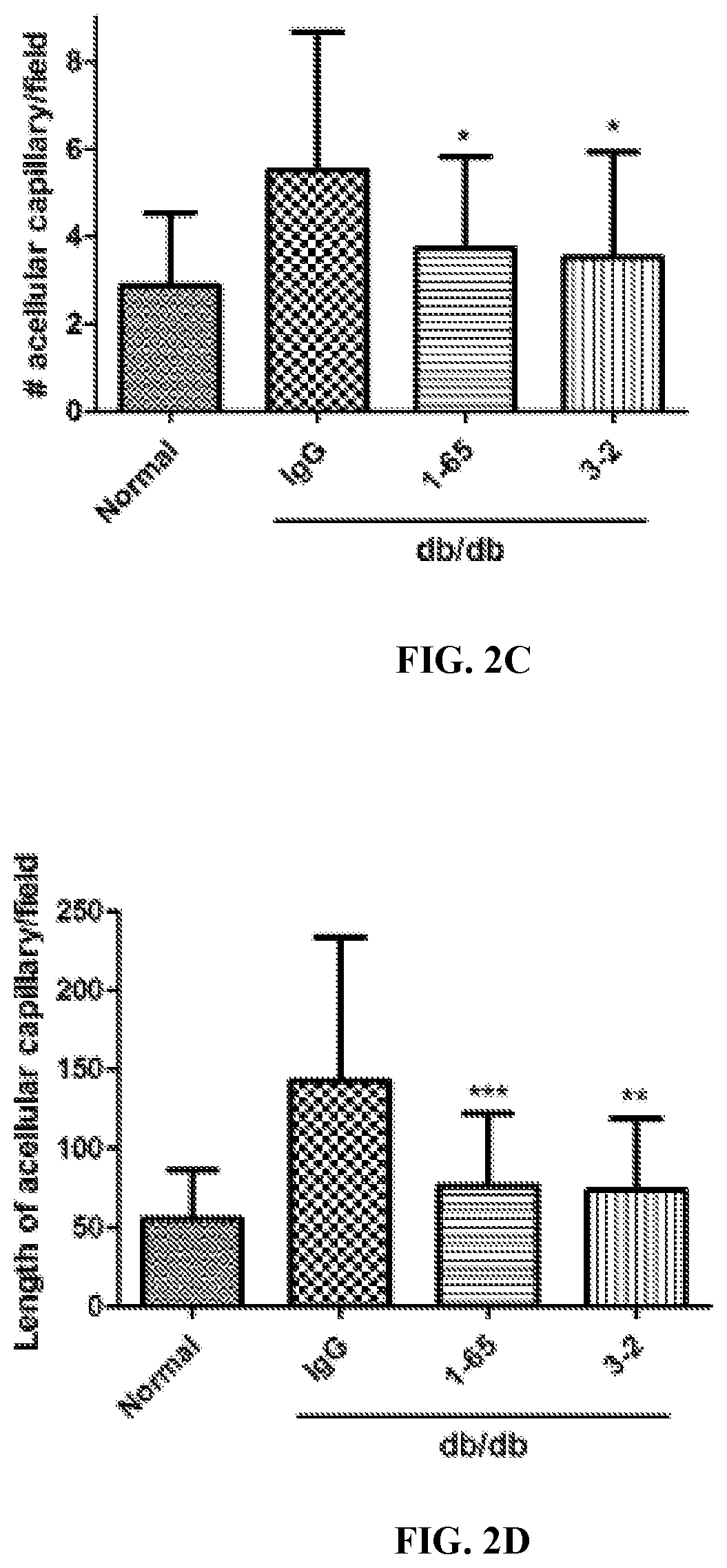Use of Anti-fam19a5 antibodies
a technology of anti-fam19a5 and antibodies, applied in the field of retinopathy treatment, can solve the problems of not cure the disease, undesirable side effects, significant discomfort, etc., and achieve the effects of reducing and/or inhibiting neovascularization, and reducing cd31 and/or vegf expression
- Summary
- Abstract
- Description
- Claims
- Application Information
AI Technical Summary
Benefits of technology
Problems solved by technology
Method used
Image
Examples
example 1
Evaluation of the Retinal Potential Difference After In Vivo Administration of Anti-FAM19A5 Antibody in a Mouse Model of Diabetic Retinopathy
[0348]To begin assessing the effect of anti-FAM19A5 antibody treatment on diabetic retinopathy, type 2 diabetic db / db mice (B6.BKS(D)-Leprdb / j) (25-week old) were used. Briefly, the mice were stabilized for one week, and then, either human IgG control antibody or an anti-FAM19A5 antibody (1-65 or 3-2 clones) were intravitreally administered to the mice (total of 7 doses at 4 μg / eye every 2 weeks) using a micro pump system. Normal (i.e., non-diabetic wild-type) mice were used as controls. Then, the retinal potential was assessed using electroretinography (ERG).
[0349]ERG is a diagnostic test that measures the electrical activity generated by various cells in the retina (i.e., retinal potential), including the photoreceptors (rods and cones), inner retinal cells (bipolar and amacrine cells), and the ganglion cells. Generally, upon a bright stimulu...
example 2
Evaluation of the Morphological Changes After Anti-FAM19A5 Antibody Treatment in a Mouse Model of Diabetic Retinopathy
[0352]To assess whether anti-FAM19A5 antibody treatment resulted in morphological changes of the retina, the type 2 diabetic db / db mice from Example 1 were sacrificed and both of the eyes were harvested from the animals.
[0353]Once harvested, one of the eyes from each of the animals were fixed in 10% neutral formalin for one day. Afterwards, the cornea, lens, and sclera were removed, and the remaining eye tissues were washed five time with distilled water for one hour while shaking. After the last wash, the distilled water was removed, and the eye tissues were incubated in 3% trypsin dissolved in 0.1 M Tris buffer for 2 hours at 37° C. Next, the retinal vessels were separated from the rest of the retinal tissue and attached to slides for staining with periodic acid-Schiff (PAS) to assess retinal microvessels for characteristic markers of early diabetic retinopathy (e....
example 3
Evaluation of the Effect of Anti-FAM19A5 Antibody on Choroidal Neovascularization in Age-Related Macular Degeneration Mouse Model
[0359]To assess the effect of anti-FAM19A5 antibody treatment on age-related macular degeneration, a mouse induced choroidal neovascularization (CNV) model was used. More specifically, the CNV model is an animal model of human wet age-related macular degeneration. Briefly, after stabilizing C57BL / 6 mice for one week, the pupils of the eyes of the animals were enlarged (with a topical treatment of 2.5% phenylephrine hydrochloride). Then, the animals were treated intraperitoneally with 2% Fluorescein (Sigma) to stain the blood vessels. Approximately 3-5 minutes after Fluorescein injection, the mice were anesthetized, and using a Phoenix green laser photocoagulator, wet AMD-like lesions were induced at four areas of the optic nerve with a laser (240 mW, 70 ms duration). FIG. 6. Afterwards, either human IgG control antibody or anti-FAM19A5 antibody were intrav...
PUM
 Login to View More
Login to View More Abstract
Description
Claims
Application Information
 Login to View More
Login to View More - R&D
- Intellectual Property
- Life Sciences
- Materials
- Tech Scout
- Unparalleled Data Quality
- Higher Quality Content
- 60% Fewer Hallucinations
Browse by: Latest US Patents, China's latest patents, Technical Efficacy Thesaurus, Application Domain, Technology Topic, Popular Technical Reports.
© 2025 PatSnap. All rights reserved.Legal|Privacy policy|Modern Slavery Act Transparency Statement|Sitemap|About US| Contact US: help@patsnap.com



